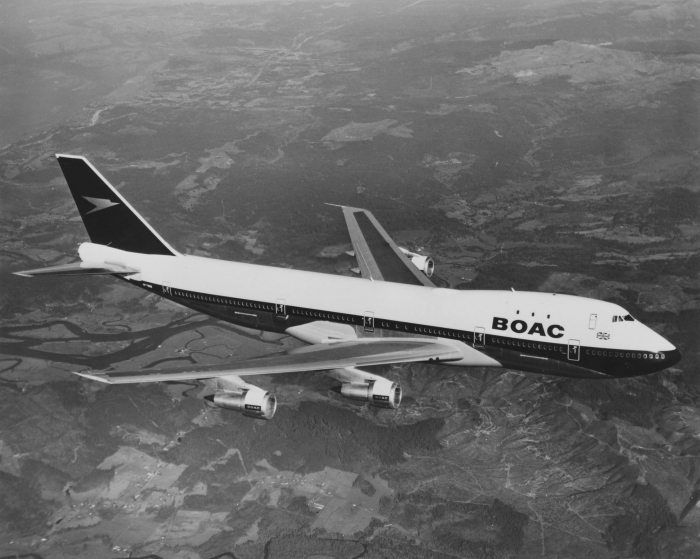Imagine turning up at an airport car rental desk, and the clerk offered you a vehicle that was designed in the 1960s and assembled in the 1990s. Unless you are a glutton for retro punishment, you would scoff and walk away.
Yet many of the people in the queue for Avis or Hertz may well have touched down in a machine conceived and constructed in just those decades.
Fifty years ago, the Boeing 747 took to the skies for the first time, a plane as innovative as it was vast, lifting gracefully from Paine Field north of Seattle. After the 85-minute flight across the chilly Pacific Northwest, Jack Waddell, the test pilot, became a local hero. And the “Jumbo” became a global hero.
Until that moment, passenger aircraft had always been narrow-bodied with a single aisle and no upper deck. But within a year, the Jumbo jet revolution had begun with the first Pan Am commercial flight from New York JFK to London Heathrow.
1969 was a year of technological miracles. Three weeks after the 747’s maiden flight, Concorde took off for the first time. And in July 1969, Neil Armstrong walked on the Moon.
Unlike supersonic and lunar travel, the Jumbo has endured, which was always the aim of the man who demanded a scale change in aviation, Juan Trippe. He was the founder of Pan Am, and a visionary who saw the potential for good in the jet age.
Passengers would be “charged with curiosity, enthusiasm and goodwill”, he foresaw. They would “roam the four corners of the world, meeting in friendship and understanding the people of other nations and races”.
Creating the 747 was a hugely ambitious, expensive and risky project for Boeing, which appeared for a time to push the planemaker to the brink of bankruptcy. Yet Boeing and the Jumbo have outlived Pan Am by nearly 30 years
Trippe’s dream was that fares would fall to fill the planes, empowering a new generation of passengers. The cost per seat approximately halved once the Jumbo took off. Initially, wide-bodied, long-haul flying was still beyond the reach of the average traveller. Most media attention focused on the “bubble” – the upstairs cabin where the rich and famous drank and dallied.
When Virgin Atlantic started up in 1984, with a single 747 flying from Gatwick to New York Newark, Richard Branson chose the name “Upper Class” for his business product: initially it comprised just eight seats in the cabin immediately behind the flight deck.
For the average Brit, America started drawing closer once the Jumbo arrived. BOAC (the intercontinental component of what became British Airways) hired Tony Blackburn, the breakfast host on Radio 1, to advertise return fares from London to New York for £103 – about £1,300 today.
An all-747 Heathrow-JFK return flight with BA next month will cost you just £274. You might even find yourself flying on the Jumbo which British Airways is repainting in the colours of BOAC.
Even though every aircraft in the British Airways 747 fleet was delivered in the last century, you should have a comfortable flight. The biggest tribute to the creators of the 747 and the engineers who maintain them is that it remains an attractive way to travel.
The Jumbo jet, called Queen of the Skies by some, has been the planet’s prime people-mover for half a century.
Agreed, the Airbus A380 “SuperJumbo” is bigger, quieter and more fuel efficient. But the 747s has outsold it by six to one, and even today BA has three times more Jumbo jets than SuperJumbos. British Airways owns more than any other airline, and aims to fly them for another five years; by February 2024, the youngest will be a quarter-century old.
Like an outclassed Ford Escort, the plane with the hump is heading for the dump. But not just yet. The 747 may prove to be the best machine ever built.
Read the original article on the Independent.
More about: Boeing747
















































